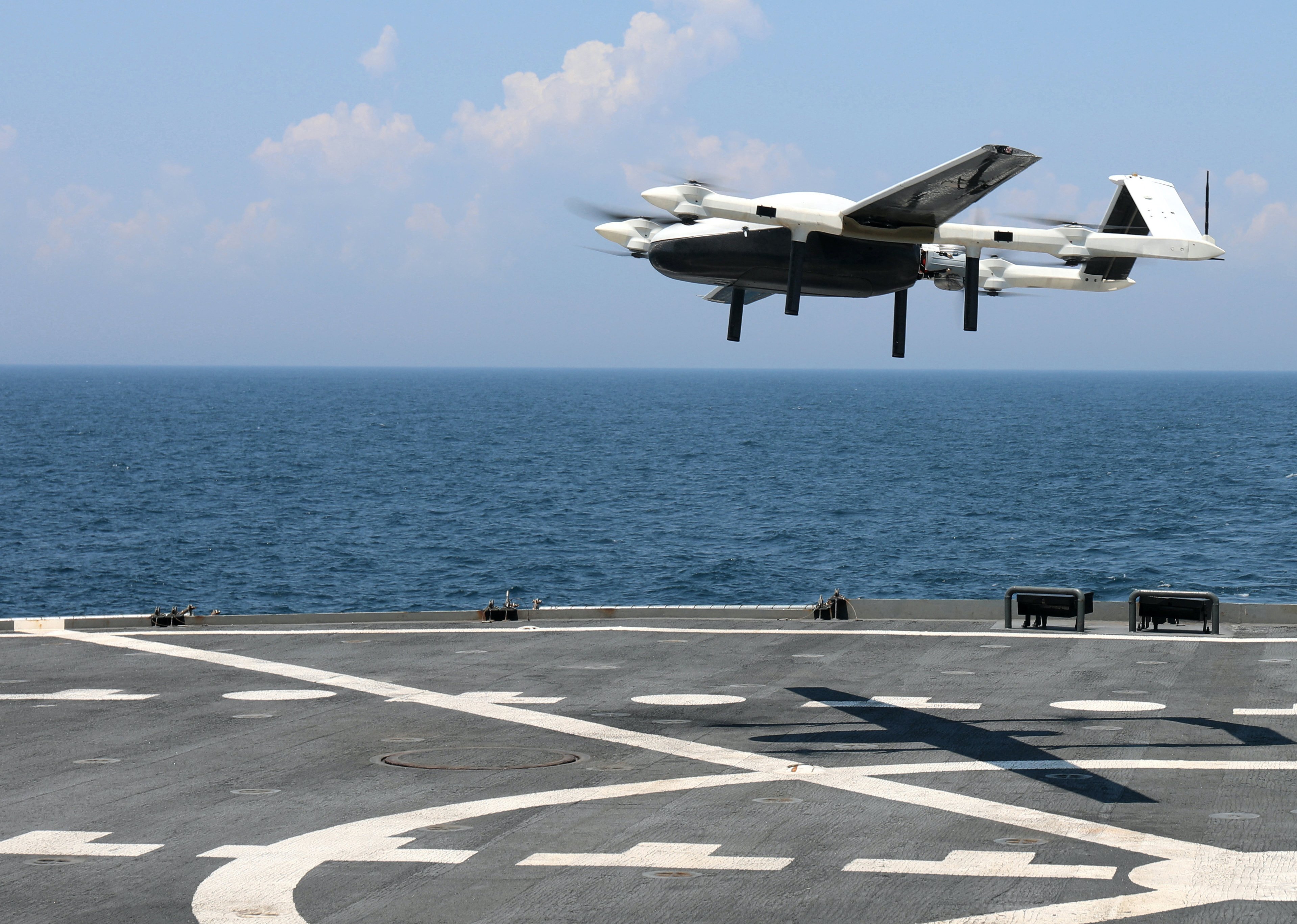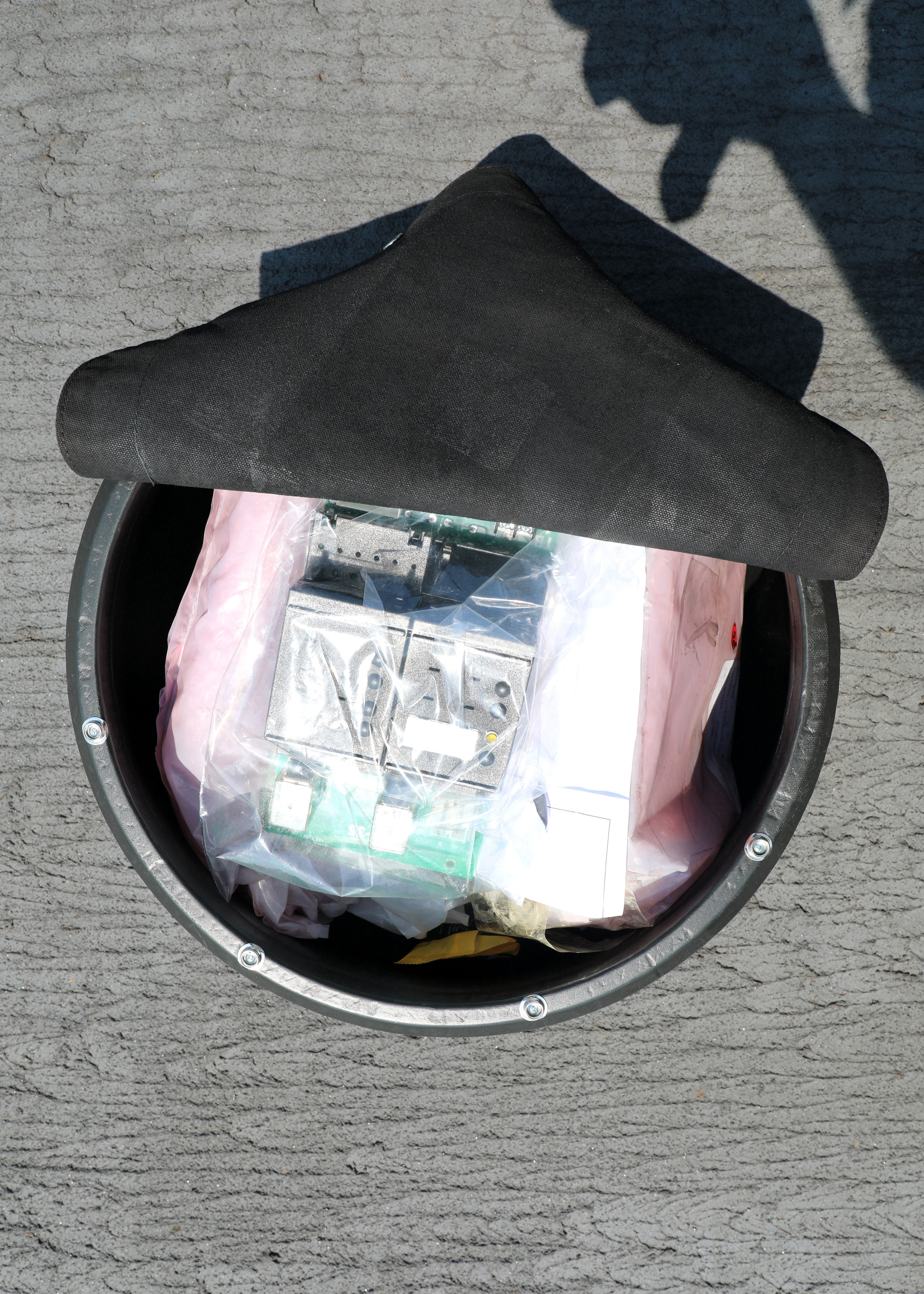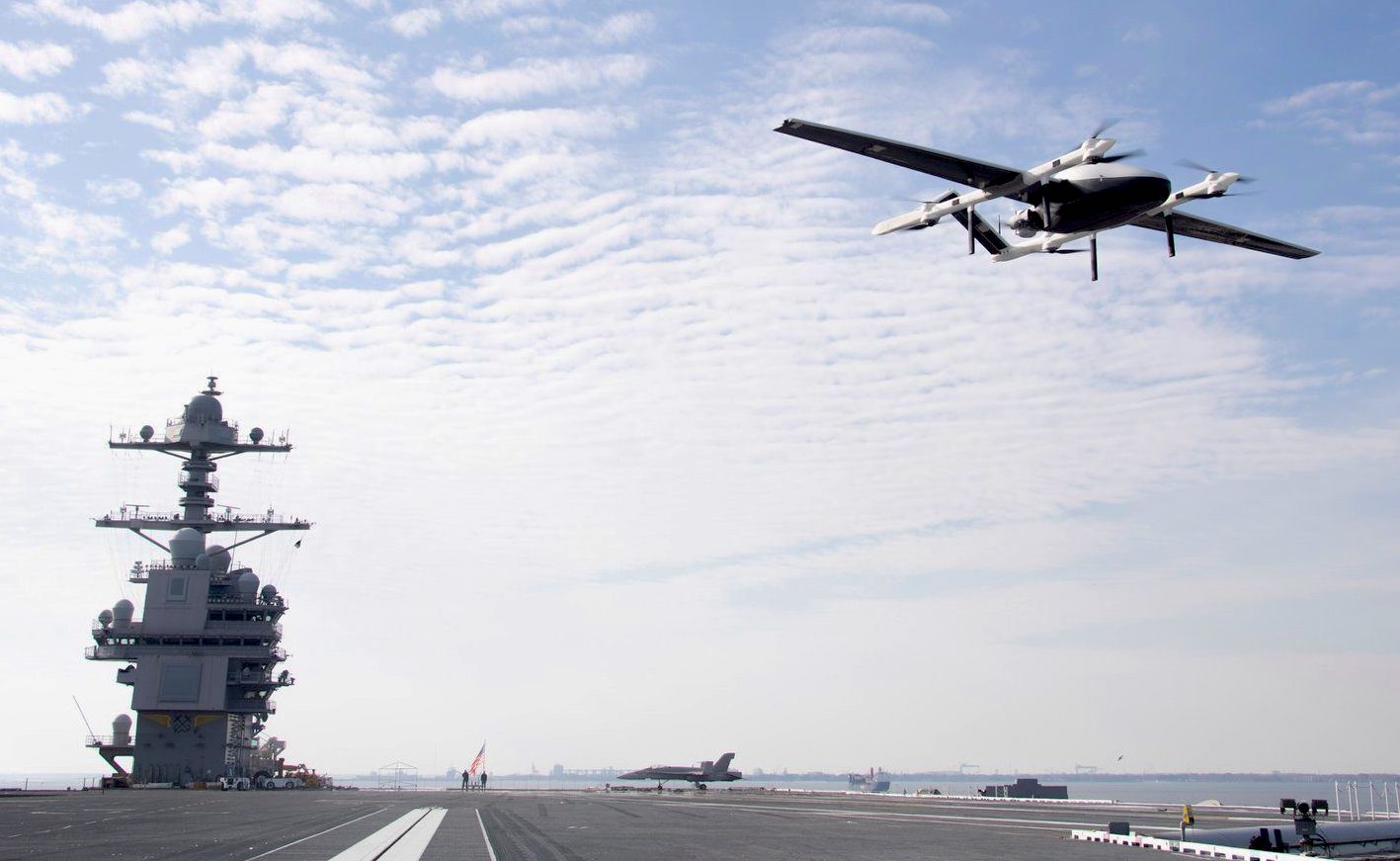
This post has been updated to include clarify comments from NAWCAD on the numbers of cargo UAVs that could deploy from a carrier later this year and to correct the test versions of the Skyways UAV that was used lasts year. They were V2.5 not V.2.2 .
NATIONAL HARBOR, Md. – Logistics drones capable of carrying up to 50-pound payloads will embark on a U.S. aircraft carrier later this year to see if the unmanned aerial vehicles are practical at sea.
The test, led by the experimentation and prototyping division at the Naval Air Warfare Center Aircraft Division (NAWCAD), is a response to Military Sealift Command and Naval Air Forces Atlantic seeking a faster way to send critical parts to warships underway.
The service has found that 90 percent of critical mission failures for systems underway can be repaired with a payload fewer than 20 pounds, which is well within the capacity of several commercial unmanned aerial systems.
“Say you have a little component on a radar, it’s broke on an Aegis-class ship. We can now use an unmanned system to go from the big deck – whether it’s an MSC ship or from the carrier – out to a small boy in a relatively short amount of time and we’re not having to reschedule and recycle a helo,” Tony Schmidt, director of rapid prototyping, experimentation and demonstration at NAWCAD, told USNI News last week at the Navy League’s annual Sea-Air-Space symposium.
“Instead of waiting for the next day to send the helicopter, or for the next [underway replenishment], we can get that capability out literally within hours.”
A NAWCAD spokesperson clarified Schmidt’s statement following an earlier version of this post to say that the testing could include “up to” four UAVs in the test.

NAWCAD used an other transaction authority (OTA) to respond to the request from MSC and AIRLANT with the Blue Water Maritime Logistics UAS concept. The concept underwent testing aboard USS Gerald R. Ford (CVN-78) at the pier and at-sea on USS Bainbridge (DDG-96) to USNS Joshua Humphreys (T-AO-188) last year with a Texas-based Skyways V2.5 tilt-rotor drone, USNI News reported.
Following last year’s test, the Navy is now going to field the capability for a drone to move a payload at a range of more than 200 miles, into the hands of sailors.
“We’re going to put four aircraft on an aircraft carrier, on an OTA this fall. We’re going to run that for the next two years and see how the fleet will use unmanned logistics,” Schmidt said.
Schmidt wouldn’t identify the carrier aboard which the Blue Water UAS will embark, but both USS George H.W. Bush (CVN-77) and Ford are set to deploy from the East Coast in the fall. Naval Air Systems Command has held an industry day and is in the process of selecting a UAV for the carrier test.

The drones will further refine requirements for future systems, Christina Allee with the NAWCAD experimentation office told USNI News.
“These demonstrations help both AIRLANT and MSC start defining the concept of operations and how they would integrate these capabilities,” she said.
“Part of doing this is not just looking for the technology but it’s also working, enabling the fleet to identify how they would do the concept of operations.”
NAVAIR has used the Blue Water UAS program as an example of how best to use tools for rapid research and development to meet fleet needs.
“In many instances, especially in the UAV market, industry has really made a substantial investment over the last five years, probably outpacing [the Defense Department] in many areas,” Schmidt said.
“If you started out with just a basic requirement in the standard acquisition process, it may be two years or more before you even get the ability to start to look at candidates. These guys are out there doing it right now today, in less than a year.”





